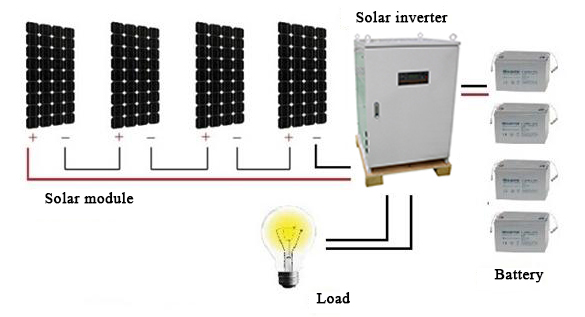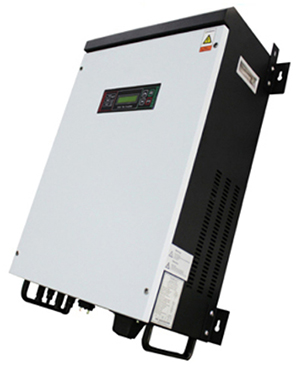The efficiency of solar inverters directly affects that of a PV power generation system. Thus studying the technology of controlling inverters is of profound research significance for improving the PV power generation system. Generally speaking, simulation control is commonly applied to designing solar inverters. However, the simulation control system has many flaws, such as the aging of components, the effect of temperature drift, high sensitivity towards electromagnetic interference, and a large number of components.

As a critical component of the entire solar PV power generation system, the solar inverter is a power electronic circuit that converts the direct current emitted by the solar array into the alternating current to power the AC load. The solar inverter has two primary functions: Firstly, to provide electricity for the AC load to complete the DC/AC conversion. Secondly, to find the optimal workplace to optimize the solar PV system's efficiency. The solar PV system works with an optimal voltage and current at specific solar radiation, temperature, and the solar cell to generate electricity at the maximum power.
Therefore, when selecting solar inverters for PV power generation system, it should meet the following 6 features:
- Solar inverters should have a reasonable circuit structure and consist of carefully selected components.
 Besides, inverters should be equipped with diverse protection functions, such as reverse polarity protection for DC input, short-circuit protection for AC output, protection against overheat and overload, etc.
Besides, inverters should be equipped with diverse protection functions, such as reverse polarity protection for DC input, short-circuit protection for AC output, protection against overheat and overload, etc. - Solar inverters should apply to a wide range of DC input voltage because the solar PV cell array's terminal voltage changes with the load and sunlight intensity. Although the storage battery has a clamping action on solar cells, the battery's voltage fluctuates with the remaining electricity in storage cells and changes in internal assistance. In particular, the terminal voltage changes considerably when the storage cell ages. For instance, a 12V storage cell has a terminal voltage ranging from 10V to 16V. Thus the solar inverter should work normally within a wide voltage range for DC input voltages. Besides, the AC input voltage should be stable and stay within the load requirements.
- Solar inverters should have high efficiency. Given that solar cells are highly-priced, the efficiency of inverters and the system should be raised to make maximum use of solar cells.
- Solar inverters should be highly reliable. Currently, the solar PV power generation system is mainly applied to remote areas and remains unguarded or maintained in many cases. It requires solar inverters to be highly reliable.
- In the solar PV power generation system with medium and large capacities, solar inverters' output should output sinusoidal waves with a small distortion factor. It is because supplying power to systems with medium/large capacities through square waves will output many harmonic components, and ultra-harmonics will result in additional losses. For inverters of the solar PV power generation system, a quality output waveform meets two specifications: high steady-state stability and good dynamic performance featuring fast adjustment and small variations in output waves under external interferences.
- Solar inverters should have a high overload capacity ranging from 125% to 150%. When the overload reaches 150%, the inverter should operate for 30s continually. When the overload reaches 125%, the inverter should operate for more than 60s. Also, solar inverters should maintain a rated sine output in any load condition (except the overload) and the transient state.
